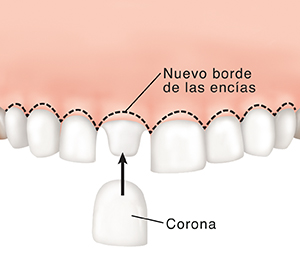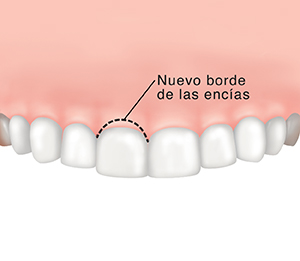¿Nota que el borde de las encías es irregular o que los dientes se ven muy cortos? ¿Necesita un arreglo dental, pero las encías cubren demasiado la corona? Un tipo de cirugía de las encías llamada alargamiento de corona puede hacer retroceder e incluso nivelar el borde de las encías. La cirugía se puede hacer por motivos funcionales o estéticos. Se puede hacer si necesita exponer una mayor cantidad de estructura dental para poder restaurar un diente. La cirugía hace que la corona esté más expuesta. La corona es la parte del diente que se ve por encima del borde de las encías.
En qué consiste el alargamiento de corona
Las cirugías para exponer más la corona pueden ser las siguientes:
-
Alargamiento funcional. En algunos casos, el deterioro o una fractura llegan por debajo del borde de las encías, por lo que se requiere una restauración (corona artificial). La encía y el hueso se retiran para exponer una cantidad del diente suficiente como para anclar la corona nueva. Esta mayor longitud ayuda también a evitar daños futuros a la encía y el hueso cerca de la restauración.
-
Alargamiento estético. Se hace para nivelar el borde de las encías o para eliminar el exceso de tejido de las encías y, en algunos casos, del hueso, que produce una sonrisa "gingival". Además de mejorar el aspecto, esta cirugía puede facilitar la limpieza de los dientes.
Featured in



